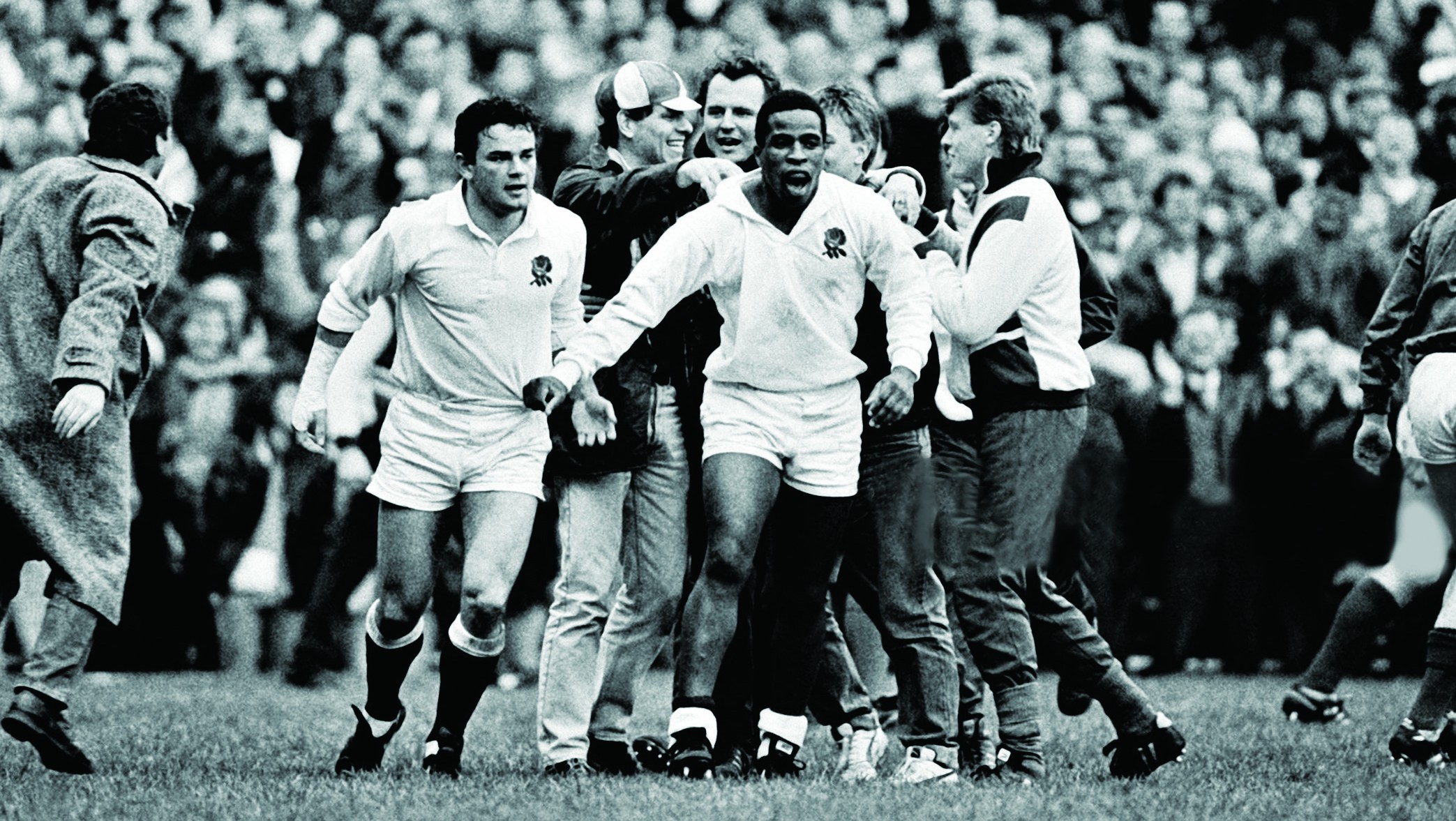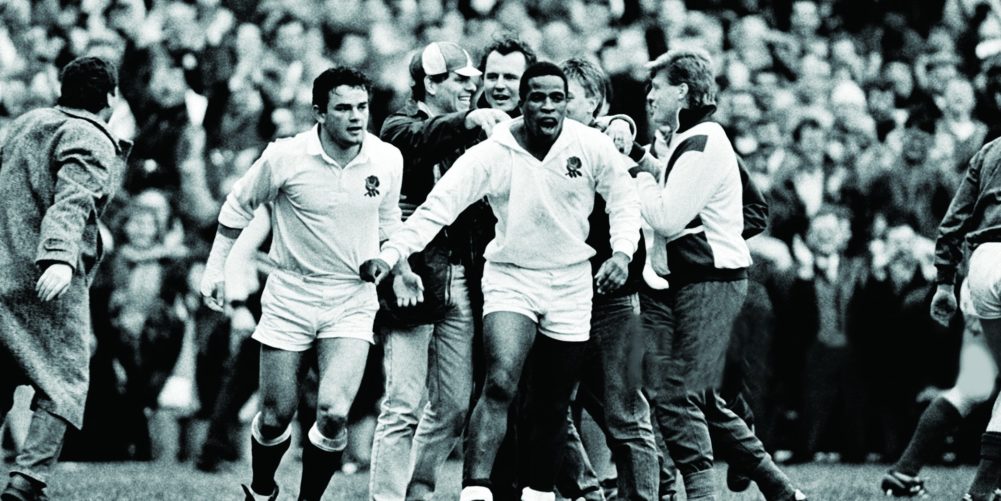Brendan Gallagher delves into some of rugby’s most enduring images, their story and why they are still so impactful

What’s happening here?
It’s March 19, 1988 at Twickenham and the England fans are beside themselves with joy as Chris Oti, playing only his second international, completes an excellent hat-trick to seal a superb second half revival from England which led to six tries and a 35-3 win over Ireland. And all this after a sickening injury to their skipper Nigel Melville early in the half which saw him crash into the advertising hoardings and suffer a nasty dislocation fracture of the ankle.
What’s the story behind the picture?
This picture reflects a rugby rejuvenation for England, but it also represents a snapshot of social history.
Oti, the young Millfield and Cambridge University wing, was only the second black rugby player to represent England and the first for 80 years since James “Darkie” Peters played against Wales in 1908. Indeed some reports had referred to Oti as the first black player to play for England so little was the Peters story known at the time.
England were in a slump. They had been shocking at the 1987 World Cup and had started the 1988 Five Nations with defeats against France and Wales. A couple of weeks earlier they had scraped a 9-6 win in Scotland, but the mood was still pretty low
Back at Twickenham, and after a dire, uninspiring first half, they trailed the Irish 3-0. Melville, hitherto their best player, then got injured and on trotted replacement Richard Harding. For whatever reason, England suddenly sparked into action. Perhaps everybody felt they were playing for their Test future, perhaps the situation was so bad that they had nothing to lose.
Oti – squat, very strong, fast and blessed with a staccato sidestep that was hard to defend against – kicked it all off with a well-taken try and gradually the Twickenham crowd picked up the vibe that something special was happening.
England added five more tries including two more from Oti. The second was well taken but a tad fortunate, Ireland were convinced he had a foot in touch when he dived in and the existing footage seems to support that, but the third was an absolute peach featuring half the England team and a beautiful floated pass from Will Carling to Jonathan Webb who sent Oti sprinting away and then stepping inside for the concluding score. Nobody had ever heard Twickenham so loud and animated.
What happened next?
The England fans started singing Swing low, sweet chariot to honour their new hero. The song, a much loved civil rights marching song in the 60s, had been composed by Wallis Wallis in about 1865, had has also been a staple of the many anti-apartheid marches many students attended in the 1970s and early 80s. It was also a staple of the Middlesex Sevens throughout the 70s, versions breaking out at any stage of the day but always with a full rendition in the 40-minute break between the last semi-final and the final. On those occasions the stadium announcer Peter Yarranton – a future RFU President, would invariably lead it on his PA system.
“The England fans started singing ‘Swing low, sweet chariot’ to honour their new hero”
With its simple lyrics it also became a clubhouse favourite with some hand actions, one of them slightly profane, incorporated, but it would be wholly wrong to say that the fans in 1988 had no idea of the origins of the song, in fact that was the whole point. They did and it was sung to honour Oti. Had, say, Rob Andrew scored the hat-trick that day I doubt very much if the spontaneous mass singing would have occurred.
On the day it seemed totally appropriate and in fact, rather inspired. Fancy the only terrace ditty that everybody knew the words to being a civil rights marching song on the occasion of Oti scoring a match-winning hattrick.
Why is the picture iconic?
For all of the above! This was the instant an England tradition was created. The song became not only a celebration of Oti and his ethnic roots but also a redemption song for England rugby, light at the end of the tunnel so to speak.
And then it snowballed. The song also became associated with success and England were entering a phase of conspicuous success under the captaincy of Will Carling with three Grand Slams and a World Cup final appearance. And even when England weren’t winning, it was employed by the crowd to try and inspire the team.
The tradition was forged and really there is no telling why a particular song gains traction among fans. Flower of Scotland is about beating up the English and giving them a bloody nose; La Marseillaise is a French call to arms against the dastardly Germans; Fields of Athenry is about famine, deportation, and heartache in colonised Ireland; Delilah is about domestic violence. Even Sospan Fach is essentially about child neglect, leaving young kids unattended in a dangerous kitchen!
Footnote: Oti’s career at the top was comparatively short but he did score eight tries in 15 England appearances including a four-try haul against Romania in Bucharest. He played in England’s opening RWC1991 game against New Zealand and again a few days later against Italy but dropped out of favour after that with Simon Halliday being moved to the wing. He never played for England again.

























Pingback: วิเคราะห์บอลวันนี้
Pingback: blog here